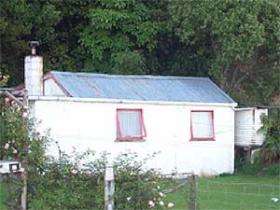Roof-collected rainwater fails health test

Drinking water from your roof carries a significant risk of illness, according to a five-year study from Massey University.
More than half of 560 samples from private dwellings in New Zealand exceeded the minimal standards for contamination and 30 percent showed evidence of heavy faecal contamination.
“I’m utterly amazed at the number of roof water supplies that fail the New Zealand drinking water standards,” says Stan Abbott, a microbiologist at the Institute of Food, Nutrition and Human Health.
Roof-collected rainwater consumption is popular because the public believes that rainwater is pure and safe to drink, says Mr Abbott, who is Director of the Roof Water Research Centre at Massey’s Wellington campus.
More than 400,000 New Zealanders depend on roof-collected rainwater systems for their drinking water, especially those living on farms, lifestyle blocks or baches that are not served by town water supplies.
The likely sources of the contamination were faecal material deposited by birds, frogs, rodents and possums, and dead animals and insects, either on the roof, gutters, or water tank. Contamination can lead to gastrointestinal diseases from pathogens including salmonella, campylobacter, giardia and cryptosporidium.
“Simple steps such as installing down-pipe debris screens and a first-flush diverter will reduce the risk of contracting waterborne diseases,” he says. A first-flush diverter is a device that reduces contamination of the tank water by diverting the first flush of contaminated water after a rain-fall event so that contaminants do not enter the tank. Recent research at Massey University has shown spectacular improvements in water quality in the storage tanks linked to first flush diverters.
While relatively few disease outbreaks linked to contaminated roof-collected rainwater have been reported in New Zealand, Mr Abbott says indications are that there is massive under-reporting of illnesses associated with contaminated roof water.
“The lack of evidence linking illness and poor quality roof water inhibits moves to improve systems delivering rainwater for consumption.”
Although it is the homeowner’s responsibility to ensure drinking water is clean, he says information on the safe collection and storage of roof-collected rainwater seems not to be reaching many people.
“Accurate communication of the health risks of contaminated roof water is necessary so that the consumers can manage the risks.”
The Building Act requires premises to be provided with potable water for consumption, oral hygiene, utensil washing and food preparation. Under Section 39 of the Health Act it is illegal to let or sell a house unless there is a supply of potable water.
Roof-water users can reduce their risks of disease from contaminated rainwater consumption by regular maintenance and using a well-designed system, says Mr Abbott.
Source: Massey University





















